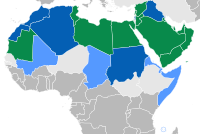
Photo from wikipedia
In his learned and stimulating article that helps frame the contributions to this roundtable while also outlining directions for future work in this area, Nile Green notes the striking fact… Click to show full abstract
In his learned and stimulating article that helps frame the contributions to this roundtable while also outlining directions for future work in this area, Nile Green notes the striking fact that it has been nearly a hundred years since the last substantial English survey of the field was attempted. That was M. G. Zubaid Ahmad's “Contribution of India to Arabic Literature,” completed as a PhD dissertation under the supervision of the noted Orientalist Sir Thomas Arnold (d. 1930) at the School of Oriental Studies (as it was then known), University of London, in 1929. It was subsequently published with a preface by another distinguished Orientalist, Sir Hamilton Gibb (d. 1971), and retains some scholarly interest to this day.1 That interest lies not only in the descriptions of the many Arabic-language works it lists—going well beyond Carl Brockelmann's classic Geschichte der arabischen Litteratur in this respect—but also, in hindsight, in the assumptions that guide Ahmad's work. Ahmad believed there was little in the Arabic literature surveyed that showed any originality, partly because there was not much remaining to be said in fields like Qur'anic exegesis, the reported teachings of the Prophet Muhammad (hadith), or law by the time Indian scholars began engaging seriously with these subjects. It was also partly to do with an intellectual decline well underway by the time relevant areas of inquiry had reached India. The intellectual landscape remained unrelieved whether one looked at religious or secular literature, or even at writings in Persian for that matter: “… in spite of the abundance of Persian literature produced in India, nothing original is found in these contributions.”2
Journal Title: International Journal of Middle East Studies
Year Published: 2023
Link to full text (if available)
Share on Social Media: Sign Up to like & get
recommendations!